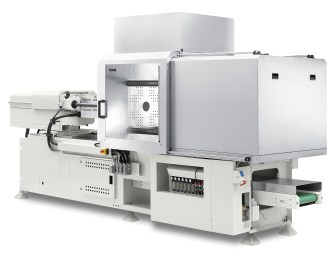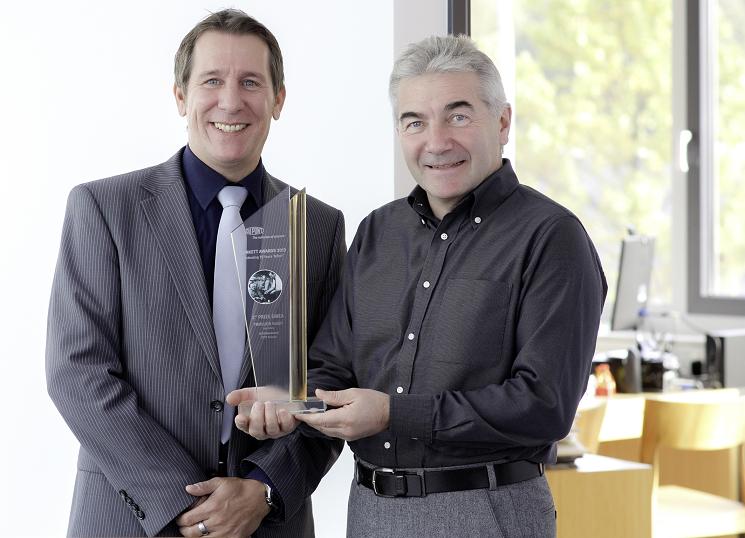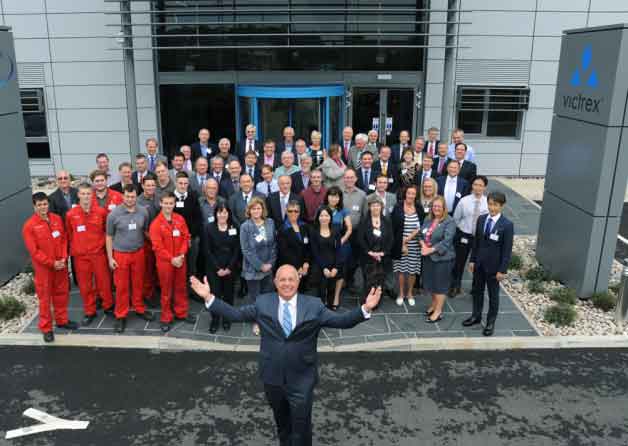
The great migration of manufacturing from North America to China began 20 years ago when companies, believing they could reduce production costs 30 to 40%, began establishing facilities and working with third parties there to benefit from special economic zones, new industrial infrastructure, favorable tariffs, low currency-exchange rates and, importantly, cheap labor. With K 2013, the world’s largest trade fair for plastics and rubber, coming up in Düsseldorf, Germany, from 16 to 23 October, it seems appropriate to review how things have developed over the years.
In reality, the savings, while sizeable, never matched expectations. Now that labor costs, tariffs and related production expenses in China are rising, manufacturing is moving again – this time back to North America in a trend called reshoring. Reshoring was identified in 2012 as a growing transfer of select manufac-turing operations from China and other low-cost countries back to the U.S. and Canada. “Select” in this case means advanced manufacturing: high-tech or complex parts that require skilled product design and mold and tool development, along with sophisticated molding, extrusion and other process capabilities.
High Costs Affect Production
The factors that sparked reshoring are straightforward: China is becoming too expensive in labor and other costs to sustain the profit margins North American companies want, especially the plastics processors and mold-makers that set up operations there to serve OEM customers, generate regional business or ship products to domestic markets.
Moreover, long-standing expenses are further diminishing margins. These include trips to and from China by North American managers to check op-erations; rising local taxes and tariffs; the time and growing cost of product transit (which is almost always by sea) to North America and elsewhere; and the frequent reengineering of molds to correct mistakes or poor-quality work. This last not only adds cost but delays time-to-market schedules, which affects sales and a company’s competitive advantage.
In the early days of offshore manufacturing, when China-made products were touted as yielding a 30 to 40% total cost advantage over North American-made goods largely because of inexpensive labor, quality prob-lems, transit time and travel to and from China by managers were not viewed as prohibitive in the overall cost equation.
As an example of how cheap labor was in China, a German machinery executive in 1996 visited a plant his company was renovating in Beijing for production of extrusion equipment. The factory floor was being covered with 1 in2 (6.45 cm2) ceramic tiles. Rather than install the tiles in prefabri-cated sheet form, as would have been done in the West, he said that doz-ens of Chinese workers were laying them by hand for less money than it would have cost back in Germany.
Advantage Shifts From China
However, costs between the U.S. and China now are “heading toward equilibrium,” says David Sievers, principal, strategy and operations prac-tice at The Hackett Group, a consulting firm based in Miami, Florida, that analyzes reshoring. When all expenses are factored, Sievers says it now costs a U.S. manufacturer ¢84 on the dollar to make and ship products back to North America from China. At this level “it’s a toss-up” as to whether any economic benefit is realized from manufacturing in China.
A key driver here, and arguably the factor that has generated most atten-tion among decision-makers, is labor cost. Wages in China have been ris-ing at an annual rate of 15 to 18%, observers say. And while workers in mold and tooling shops and processing plants still make much less than their counterparts in North America, the advantage of cheap labor in China is ending.
There are rising costs in other areas. Many tax incentives that China of-fered to foreign manufacturers are expiring, energy to operate plants is expensive, and shipping costs are increasing. Sievers refers to all of these expenses as part of “total landed cost” (TLC). Other expenses include: capital investments in equipment and facilities; production costs; handling and inventory; transit to a port; tariffs and other taxes; insurance and shipping; receiving and distribution in North America; product inspections; correcting quality problems; and of course, labor.
The 16% differential between TLC and U.S. production expenses, Sievers says, was reached this year. He expects it will result in many companies reshoring production to North America. Among the industries that benefit from this will be plastics, especially moldmakers and processors, the in-dustry’s front line in building business. The Hackett Group hasn’t looked at plastics opportunities specifically, says Michel Janssen, chief research of-ficer, but “it’s reasonable to expect that plastics will benefit from primary manufacturers bringing work back to North America.”
Plastics Stand to Gain
Another analyst, Boston Consulting Group of Boston, Massachusetts, identifies seven manufacturing sectors as near a “tipping point” when it comes to reshoring. One of these is plastics and rubber products. But the sectors also include areas where plastics are extensively used–transportation, appliances, electrical equipment, computers and electron-ics.
In a report released in March, Boston Consulting Group states that 67% of respondents in the plastics and rubber products sector who were inter-viewed in February “expect that their companies will reshore production from China to the U.S.” Of the 106 companies from different industries that participated in the report, 37% with sales of more than $1 billion were planning to reshore or “actively considering” such a move. Among compa-nies with more than $10 billion in sales, that response rose to 48%.
This would have a ripple effect on related areas such as employment, capital investment, procurement of equipment and technology, and sales of materials. Janssen, however, advises caution when it comes to predict-ing benefits in these areas, especially employment.
“Work is coming back,” he says, “though this won’t include all of the jobs that were lost.” While affirming that reshoring is “a real trend,” he believes that its impact on employment will be “nuanced.” In other words, jobs are going to be added but the numbers may not be as strong as anticipated.Harry Moser, who founded the Reshoring Initiative in Kildeer, Illinois, near Chicago, believes that reshoring has generated 50,000 U.S. manufacturing jobs across all industries in the past three years – 10% of new jobs in this sector – and could result in 500,000 new manufacturing jobs by 2015.
To promote his message that manufacturing in the U.S. is more economi-cal than production in China when all factors are considered, Moser de-veloped cost-analysis software called “Total Cost of Ownership” (TCO), which is free to registered users at his website (www.reshorenow.org). This lets decision-makers evaluate the real price of manufacturing in China by comparing numerous cost factors. Moser says that if more companies analyze their offshore manufacturing operations with TCO software, they will see that savings based on product price alone evaporate rapidly.
Wage and currency changes are overwhelmingly the reasons that manu-facturers consider reshoring, based on data Moser collected. Other factors include quality and rework issues, delivery delays, shipping costs, multiple trips to and from a Chinese production plant by managers, inventory dis-putes, costs that emerge once production has started, and communication problems. Moser believes that if all manufacturers use TCO software, and if wage trends continue rising in China, as expected, it’s realistic to expect that those 500,000 U.S. manufacturing jobs will be created by 2015. And this doesn’t account for the equal number of support jobs that would be gener-ated as a result.
Before this can happen, he concedes, there needs to be a change in how corporate decision-makers analyze business and cost opportunities, along with the parameters on which they base manufacturing strategies. It could, Moser remarks, take more time than it should. Or maybe not, since one aspect of operations in North America that is also influencing reshoring is the growing productivity of workers and efforts by large companies to reduce costs further. In March, The Hackett Group re-leased a study that states U.S. manufacturers in all sectors are targeting “an aggressive 1.5% reduction in cost of goods (COG) sold for 2013 in an effort to drive margin growth.”
Productivity Gains in North America
A major factor behind this, according to the consultant, is continuing ad-vances in internal manufacturing productivity, which could account for 50% of cost reductions. In a statement, The Hackett Group reports that outsourcing was “aggressively used” through 2011 by many companies to reduce manufacturing costs. Data show that in 2011, the average COG reduction by companies was 0.3%. The shift away from outsourcing as a cost-cutting strategy and toward internal productivity began in 2012, when companies increased total cost-reduction efforts by a factor of five to 1.5% that year. If successful in their 1.5% total COG reduction goal in 2013, companies will have slashed production costs tenfold in only two years.
Among the reduction targets this year that should contribute to total de-clines in COG are an anticipated 1.7% drop in internal manufacturing costs and a 0.5% cut in materials costs – both of which follow the downward trend of 2012, when companies cut internal manufacturing costs by 1.8% and materials expenditures by 0.3%. Meanwhile, “favorable energy prices” and “stable aggregate demand” re-duced logistics costs by 1.8% last year and warehousing costs by 1.5%. Hackett expects additional savings of 2% in logistics and 1.7% in ware-housing costs this year.
Ironically, sluggish economies in many countries are partly behind these achievements. Hackett Group says that relatively stable GDPs give manu-facturers a clear picture of business demand and allow them to make pre-cise plans when it comes to allocating capacity, inventory and sales – and presumably, to make decisions about the viability of reshoring.
In fact, greater productivity, cost reductions and reshoring are expected to increase export activity and add 2.5 million to 5 million U.S. jobs by the end of the decade, according to Boston Consulting Group. In a study released last year, the company stated that cost reductions, coupled with comparatively low prices on a global basis for electricity and natural gas, could by 2015 give the U.S. an “export cost advantage of 5 to 25%” over Germany, Italy, France and the U.K., as well as Japan.
The consultant be-lieves that this would result in the U.S. taking an export share of 2 to 4% from the four European countries and 3 to 7% from Japan by the end of the decade. This in turn would increase U.S. export revenue from these countries by $90 billion (€69 billion), and globally by $130 billion (€99 bil-lion). “The U.S. is becoming one of the lowest-cost producers in the developed world, and companies in Europe and Japan are taking notice,” comments Harold Sirkin, a senior partner at Boston Consulting Group, in a statement about the report.
Reshoring’s role here is evident in the North American companies that are bringing manufacturing back from China. Also in foreign companies that are investing in U.S. plants – current or planned – to achieve cost-efficiencies in export. Among those cited by Boston Consulting Group are Toyota, which is manufacturing Camry sedans in Georgetown, Kentucky, and Sienna minivans in Princeton, Indiana, both for export to South Korea; and Honda and Nissan, which plan to increase vehicle exports from plants in Marysville, Ohio (Honda), and Smyrna, Tennessee, and Canton, Mis-sissippi (Nissan).
All of these companies are, of course, major users of plastics in their vehi-cles. Incidentally, as regards Toyota, the distance from Japan to South Korea is 400 miles (650 km), while the distance from Princeton, Indiana, to South Korea is 6,000 miles (9,700 km). The cost savings from U.S.-based manufacturing is clearly compelling.
Processors See Advantages
Moldmakers, processors and equipment suppliers watch reshoring play out daily. Conery Manufacturing Inc., an Ashland, Ohio-based producer of industrial and other parts, is opening an injection molding plant after re-shoring production from China. Chris Shafer, vice president, says the plant, called Hedstrom Injection, opens in April. The 25,000 ft2 (2,322 m2) facility starts operations with eight injection molding machines and has room for eight more.
Conery had molds and parts made in China for 16 years. “We initially saved money,” Shafer remarks, “but recently began to notice that prices were starting to climb due to freight costs, taxes and labor.” The company decided to reshore much of its manufacturing to the U.S., where he ex-pects benefits ranging from lower total product cost to improvements in mold quality and performance.
Unique Tool and Gauge, a Canadian moldmaker in Windsor, Ontario, that does 95% of its work for automotive suppliers, is seeing more interest from customers in having molds built in North America. The reason for this “sizeable shift,” says company president Darcy King, is the expectation that quality is more consistent despite the initial higher price. “Our customers’ main job is making parts. If a lot of preventive mainte-nance is needed for their molds, they will be more costly to run and that will affect their bottom line,” he says. “This metric is being looked at more closely.”
At equipment supplier Wittmann Battenfeld in Torrington, Connecticut, na-tional sales manager Sonny Morneault says reshoring is increasingly evi-dent among customers, especially custom molders. Medical, electronics and automotive seem to be the main markets for reshoring, and molders are adding business as a result. “One of my customers lost $10 million (€7.65 million) of business to China,” he remarks, “but has gotten back $2 million (€1.5 million) in the past two years. He thinks he will get all $10 mil-lion back, and more.”
“A year ago you didn’t hear much about reshoring,” remarks Steve Petrakis, vice president of U.S. and Canadian sales at auxiliaries supplier Conair of Cranberry Township, Pennsylvania. Now, based on what one representative in California tells him, 15% of new equipment business is for projects from China.
In discussing reshoring and the persistent quality problems that dogged much – though not all – of the work from China, Petrakis says that for many years cost benefits overrode quality concerns at companies. “But now that the cost of production there is catching up with North America,” manufacturing in China is becoming problematic, especially with no sig-nificant or consistent improvements in quality and other key areas.
For almost 20 years China has been touted as the future of manufacturing and portrayed as Goliath on an unstoppable global juggernaut. Reshoring demonstrates that an ongoing commitment to productivity and cost-cutting, along with core values of product quality and customer service, make a better business model for sustainable growth than a strategy based almost entirely on price.
More Information : www.k-online.de









